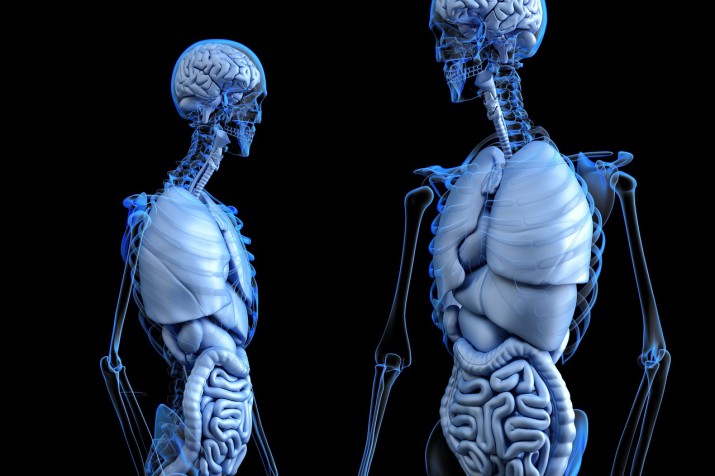Bone Density: The Big Bad Wolf vs. Wolff’s Law – Who’s afraid of the Wolff?
I’m not, and neither should you be. I’m referring to Wolff’s Law… hope and encouragement to those with osteoporosis, osteopenia and degenerating bone. Wolff’s Law stops the BAD wolf dead in his tracks, the wolf who tries to huff and puff and blow your foundation down.
Wolff’s Law: What is it?
Our skeletons are constantly changing, even at an older age. When impact or stress is applied to our bones, they remodel themselves to adapt to the stress. This is a proven law, not just a theory. For example, the bones in a tennis player’s dominant arm may be up to 20% thicker than the bones in their non-dominant arm. This is a living example of Wolff’s Law. It pronounces that our bones become thicker and stronger over time in order to resist forces that are placed on them. Our bones also will become thinner and weaker if there are no forces to fight against. So if you are engaged in strength training, tennis, jogging, even walking outdoors… you are building up your bones.
Wolff’s Law and Injury

Want to prevent injuries? Wolff’s Law will help you. A thicker bone is harder to break. If you want an added bonus, build muscles around those bone. Regular resistance training will thicken your bones and make you less prone to injury. The same principal applies to injury recovery. Ever been in a cast? The muscles around the area atrophy from non-use. Resistance training will not only rebuild lost muscle, it will also improve the strength of your recently mended bone which loses mass from being sedentary.
Bone Strength throughout Life
Osteoporosis happens when a person’s bone mass deteriorates causing them become weak and prone to fracture. Did you catch that? The bone MASS deteriorates. Weight bearing programs are essential for preventing weakening of bones later in life. A woman may lose up to 53% of her bone mass while men may lose up to 18% … all by the age of 80. Your peak bone mass is directly related to your level of physical activity and most people hit their peak bone mass by the age of 30. If you are active at a young age, you’ll have more peak bone mass by the age of 80. But if you’re a late bloomer, that’s okay! If you elevate your levels of physical activity after peak bone mass is reached, you will delay the onset PLUS reduce the rate of bone loss.
Bone-Building Exercises for All
Whether you’re home bound or a world traveler you can start building those bones now. Here are some rudimentary, basic beginner exercises to build bones (these are not appropriate for those with arthritis):
Walking on sidewalks or streets, planks, mountain climbers at home, jumping jacks, dancing around or movement based classes, push-ups, jogging in place on hard floors, playing catch, golf, tennis, weight training, some gardening, hammering … you get the idea.
Prepare for the Big Bad Wolf
The Three Little Pigs is one of the best metaphors for living that I can think of. We don’t want our body-homes to be built out of straw or twigs. We want nice strong bricks for bones so we won’t be so easily blown down.
The good news is, you can triple your strength in three months if you start now… at ANY age. Even in your 90’s. You’ll be surprised what your body can do if you just give it a little encouragement.



